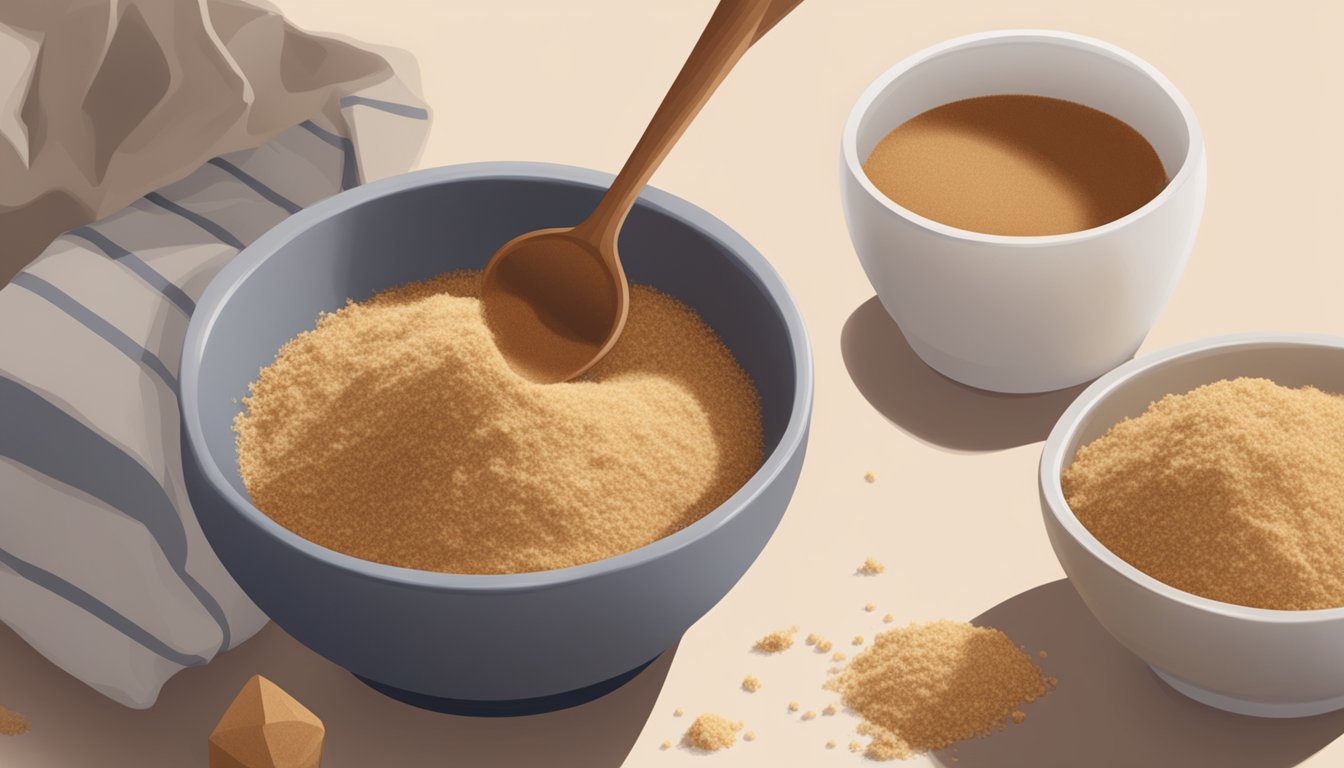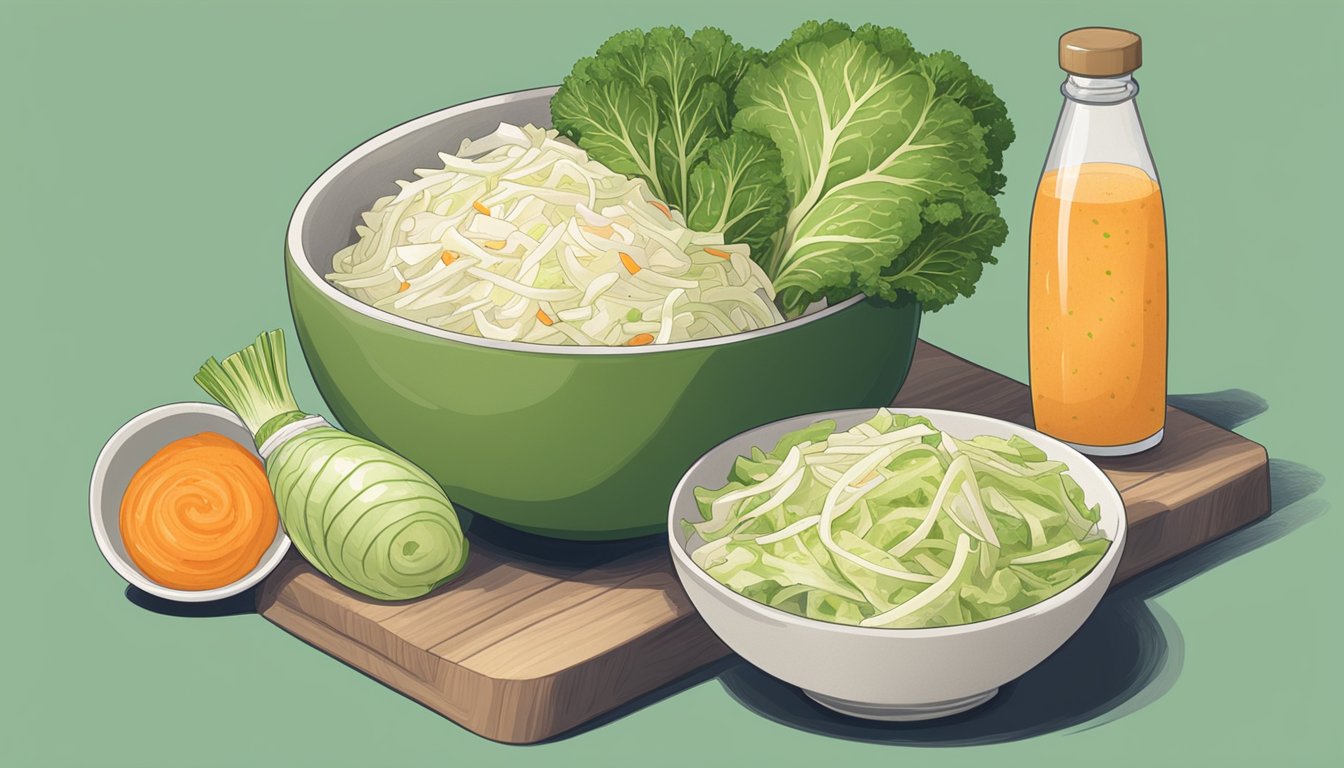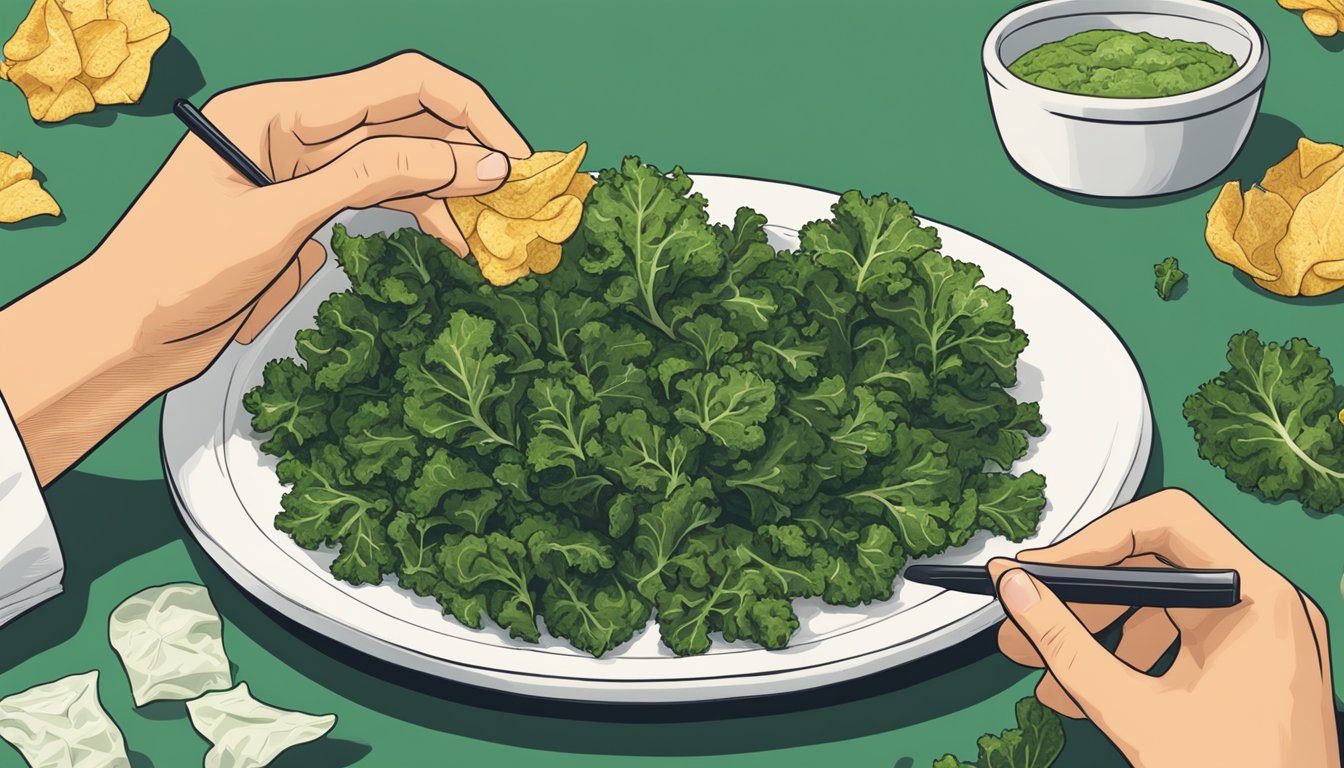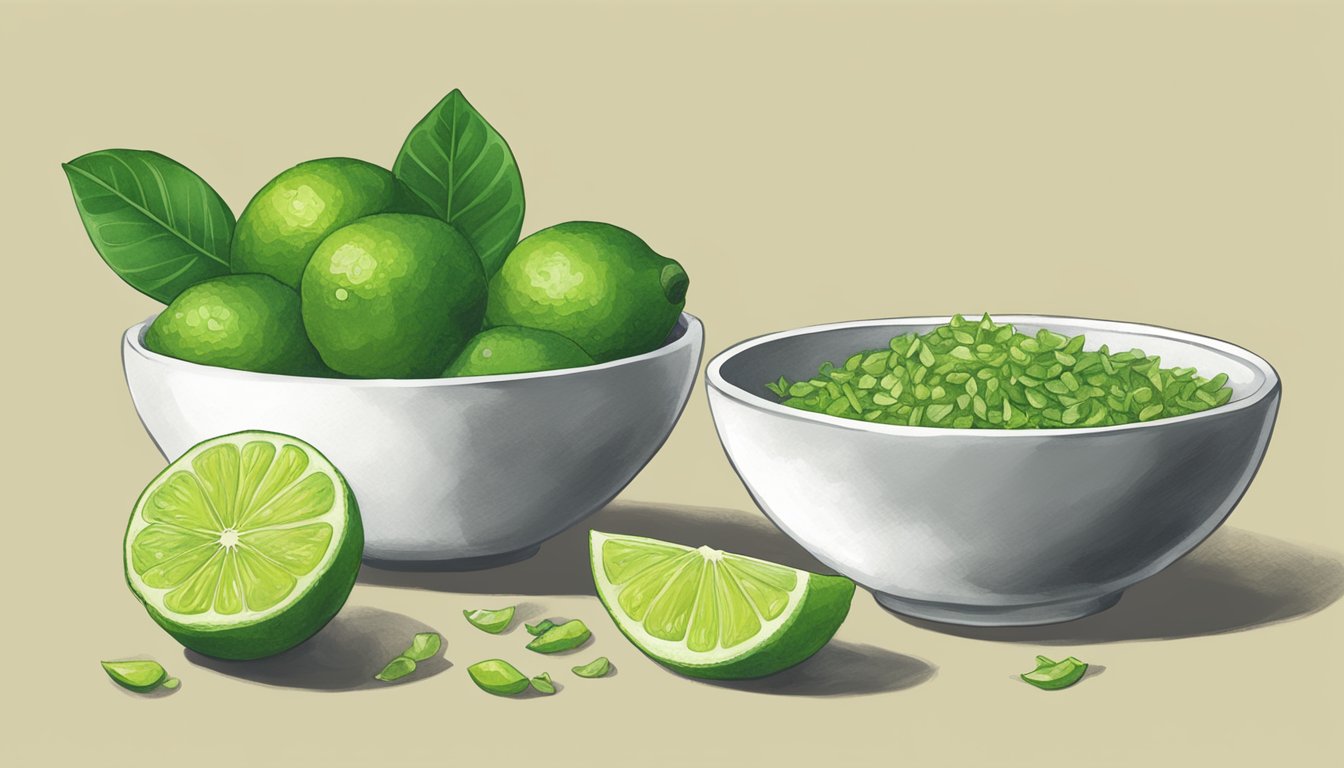Coconut sugar has gained popularity as a natural sweetener in recent years, leading many bakers to wonder if it can replace brown sugar in their recipes. Coconut sugar can be substituted for brown sugar in most baking recipes using a simple 1:1 ratio. This means that for every cup of brown sugar called for in a recipe, one cup of coconut sugar can be used instead.
While coconut sugar shares similarities with brown sugar, it does have some unique characteristics that may affect the final product. Coconut sugar has a drier texture and a distinct caramel-like flavor that differs from the molasses notes in brown sugar. These differences can lead to slight changes in the texture and taste of baked goods.
Bakers should be aware that coconut sugar may result in slightly drier or crumblier baked goods. To counteract this, adding a small amount of additional liquid or fat to the recipe can help maintain moisture. Despite these minor adjustments, coconut sugar remains a viable substitute for those looking to explore alternative sweeteners in their baking endeavors.
Understanding Sugar Substitutes
Sugar substitutes offer alternatives to traditional sweeteners in baking. These options can provide different flavors, textures, and potential health benefits compared to standard sugars.
Types of Brown Sugar
Light brown sugar contains about 3.5% molasses, while dark brown sugar has around 6.5%. This difference affects color, flavor intensity, and moisture content in baked goods. Light brown sugar imparts a milder taste, making it suitable for cookies and cakes. Dark brown sugar provides a richer, more complex flavor, ideal for gingerbread and other robust desserts.
Common uses:
- Light brown sugar: Chocolate chip cookies, vanilla cakes
- Dark brown sugar: Gingerbread, barbecue sauces
Coconut Sugar Characteristics
Coconut sugar, derived from coconut palm sap, has a lower glycemic index than brown sugar. It offers a caramel-like flavor with subtle coconut notes. When substituting for brown sugar, use a 1:1 ratio in most recipes.
Key features:
- Color: Similar to light brown sugar
- Texture: Slightly drier than brown sugar
- Flavor: Caramel-like with hints of coconut
Coconut sugar may result in slightly drier baked goods. To compensate, consider adding a small amount of extra liquid or fat to the recipe.
Health Considerations
Coconut sugar contains trace amounts of nutrients like iron, zinc, and potassium. Its lower glycemic index may cause a slower rise in blood sugar compared to brown sugar. However, it’s important to note that coconut sugar still contains calories and should be consumed in moderation.
Nutritional comparison (per 100g):
| Nutrient | Brown Sugar | Coconut Sugar |
|---|---|---|
| Calories | 380 | 375 |
| Carbs | 98g | 100g |
| Fiber | 0g | 1g |
While coconut sugar may offer some benefits, it’s not significantly healthier than brown sugar. Both should be used sparingly as part of a balanced diet.
Substituting Coconut Sugar in Baking
Coconut sugar can effectively replace brown sugar in baking with some key considerations. The substitution affects conversion ratios, texture, moisture, and flavor profiles in recipes.
Conversion Ratios
Coconut sugar substitutes for brown sugar in a 1:1 ratio in most baking recipes. This straightforward conversion makes it easy to swap in coconut sugar. For example:
- 1 cup brown sugar = 1 cup coconut sugar
- 1/2 cup brown sugar = 1/2 cup coconut sugar
- 1 tablespoon brown sugar = 1 tablespoon coconut sugar
Keep in mind that coconut sugar is less sweet than brown sugar. For recipes where sweetness is crucial, slightly increasing the amount of coconut sugar may be necessary.
Texture and Moisture Content
Coconut sugar has a drier texture compared to brown sugar, which can impact baked goods. This difference may result in slightly drier or crumblier textures. To compensate:
- Add 1-2 tablespoons of liquid for every cup of coconut sugar used
- Increase fat content slightly (e.g., 1 extra tablespoon of butter or oil)
- Consider reducing baking time by 1-2 minutes
Coconut sugar doesn’t melt as readily as brown sugar. This property may affect recipes that rely on sugar melting, such as caramel sauces or frostings.
Flavor Profile Alterations
Substituting coconut sugar introduces a distinct flavor profile to baked goods. Key flavor changes include:
- Caramel-like taste, less molasses flavor than brown sugar
- Subtle coconut undertones in some recipes
- Lower sweetness intensity
These flavor alterations can enhance certain recipes, particularly those with complementary flavors like chocolate, nuts, or tropical fruits. In more delicate recipes, the flavor shift may be more noticeable.
Coconut sugar works well in:
- Cookies
- Muffins
- Quick breads
- Granola
It may be less suitable for:
- Light-colored cakes
- Recipes where a strong molasses flavor is desired
Recipes and Adjustments
Substituting coconut sugar for brown sugar requires some recipe modifications. These adjustments ensure successful results in both sweet and savory dishes.
Adapting Recipes for Coconut Sugar
When using coconut sugar in place of brown sugar, start with a 1:1 ratio. For every cup of brown sugar, use one cup of coconut sugar. Keep in mind that coconut sugar is less moist than brown sugar.
To compensate for the reduced moisture, add an extra tablespoon of liquid for every cup of coconut sugar used. This could be water, milk, or oil, depending on the recipe.
Coconut sugar has a lower melting point than brown sugar. Reduce the oven temperature by 25°F (about 14°C) when baking to prevent over-browning.
Consider sifting coconut sugar before use, as it tends to form clumps. This ensures even distribution in the batter or dough.
Desserts and Sweet Dishes
Coconut sugar works well in many dessert recipes. Its caramel-like flavor enhances chocolate cakes, cookies, and brownies.
In fruit pies, coconut sugar complements the natural sweetness of the fruit. Use it in the filling and for the crust.
For frostings and glazes, coconut sugar may need to be ground finer. Use a food processor or blender to achieve a powdered sugar-like consistency.
Try this simple coconut sugar glaze:
- 1 cup coconut sugar (finely ground)
- 2-3 tablespoons milk
- 1/2 teaspoon vanilla extract
Mix ingredients until smooth, adjusting milk for desired consistency.
Savory Dishes and Glazes
Coconut sugar adds depth to savory dishes. Its complex flavor works well in marinades, barbecue sauces, and glazes for meats.
For a simple glaze, mix:
- 1/4 cup coconut sugar
- 2 tablespoons soy sauce
- 1 tablespoon rice vinegar
- 1 teaspoon grated ginger
Simmer until slightly thickened. Use on grilled chicken or roasted vegetables.
In stir-fries, coconut sugar can replace brown sugar. Start with half the amount called for and adjust to taste.
Coconut sugar enhances the flavor of tomato-based sauces. Add a tablespoon to pasta sauces or chili for a subtle sweetness.
Alternative Sweeteners to Brown Sugar
Brown sugar substitutes come in various forms, offering different flavors and properties for baking. These alternatives range from liquid sweeteners to sugar alcohols and dry sugar options.
Liquid Sweeteners
Honey provides a natural sweetness and moisture to baked goods. It’s slightly sweeter than sugar, so use about 3/4 cup for every cup of brown sugar. Maple syrup imparts a distinct flavor and can be used in a 1:1 ratio. Agave nectar is sweeter than sugar, requiring only 2/3 cup to replace 1 cup of brown sugar.
These liquid sweeteners may affect recipe moisture, so reduce other liquids slightly. They also tend to caramelize faster than granulated sugars, so watch baking times closely.
Sugar Alcohols and Extracts
Xylitol and erythritol are sugar alcohols that provide sweetness with fewer calories. Use them in a 1:1 ratio to replace brown sugar. They don’t caramelize like sugar, which may affect texture in some recipes.
Stevia, a plant-based sweetener, is much sweeter than sugar. Use it sparingly – about 1 teaspoon of liquid stevia or 1/3 cup of granulated stevia for 1 cup of brown sugar. Stevia doesn’t provide bulk, so recipes may need adjusting.
Dry Sugar Alternatives
Date sugar, made from ground dried dates, can replace brown sugar in a 1:1 ratio. It adds a rich, caramel-like flavor to baked goods. Maple sugar, produced by evaporating maple syrup, offers a similar sweetness level to brown sugar.
Turbinado and demerara sugars are less processed alternatives. They have larger crystals and a subtle molasses flavor. Use them in a 1:1 ratio, but expect a slight change in texture and color in the final product.
Coconut sugar can also substitute brown sugar 1:1. It imparts a caramel-like taste that works well in many recipes.
Making Your Own Brown Sugar Substitute
Creating a brown sugar substitute at home is simple and cost-effective. These homemade alternatives can closely mimic the flavor and texture of commercial brown sugar in baking recipes.
Homemade Brown Sugar Mixes
Mix 1 cup of granulated white sugar with 1 tablespoon of molasses for light brown sugar. For dark brown sugar, increase the molasses to 2 tablespoons. Stir thoroughly until the mixture reaches a uniform color and consistency.
Muscovado sugar makes an excellent brown sugar substitute. It’s less refined and retains more natural molasses, providing a rich flavor profile. Use it in a 1:1 ratio for brown sugar in recipes.
Raw sugar or turbinado sugar can also work as substitutes. These have larger crystals and a subtle molasses flavor. Pulse them in a food processor for a finer texture before using in baking.
Combining Sugars for Desired Results
Blend different types of sugars to achieve the desired sweetness and moisture content. Mix equal parts white sugar and raw sugar for a light brown sugar alternative.
For a darker substitute, combine 2 parts raw sugar with 1 part muscovado sugar. This mixture provides depth of flavor and moisture similar to dark brown sugar.
Experiment with ratios of cane sugar and molasses to create custom blends. Start with small batches to perfect the combination before scaling up for larger recipes.
When using these substitutes, consider adjusting liquid ingredients slightly. Homemade mixes may affect the moisture content of baked goods differently than commercial brown sugar.
Practical Tips for Substitution
Substituting coconut sugar for brown sugar requires attention to detail in measuring, mixing, and adjusting baking times. These practical tips will help ensure successful results when making the switch.
Measuring and Mixing
Use a 1:1 ratio when substituting coconut sugar for brown sugar. Measure coconut sugar by volume, not weight, as it’s less dense than brown sugar. Sift or break up clumps before measuring for accuracy.
Coconut sugar doesn’t retain moisture like brown sugar, so recipes may need slight liquid adjustments. Add 1-2 teaspoons of liquid per cup of coconut sugar used. This helps achieve proper texture and consistency.
For recipes requiring sugar to be creamed with butter, mix coconut sugar and butter longer. Coconut sugar’s larger granules take more time to incorporate fully.
To replicate brown sugar’s molasses flavor, add 1 teaspoon of molasses per cup of coconut sugar. This mimics the taste profile more closely.
Adjusting Baking Times
Coconut sugar caramelizes at a lower temperature than brown sugar. Monitor baked goods closely and check for doneness 3-5 minutes earlier than usual.
Reduce oven temperature by 25°F (about 14°C) when using coconut sugar. This prevents over-browning or burning, especially in recipes with longer baking times.
For cookies, expect a slightly different texture. Coconut sugar produces crispier edges and a softer center. Adjust baking time if a specific texture is desired.
In cakes and quick breads, coconut sugar may cause faster browning on the outside. Cover with foil if needed to prevent over-browning while the center finishes baking.



